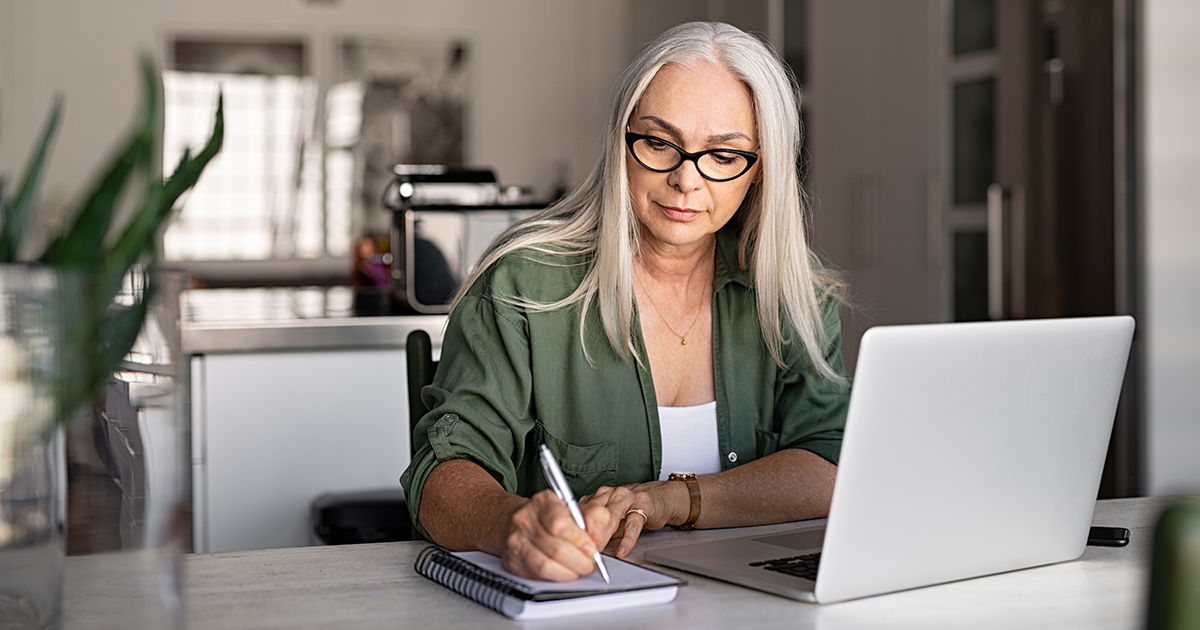
How to prep for your video doctor visit
Ready for a video visit?
By now, you’ve probably at least heard about video doctor visits. Maybe you’ve even had one.
More than 15,000 people from Escanaba, Michigan, to Alton, Illinois, had a video visit with their primary care physician, advanced practice provider or specialist in the first few weeks after OSF HealthCare rolled out the telehealth service on March 30. Those numbers are growing every day.
When COVID-19 changed the world, OSF HealthCare changed, too. We grew to meet the growing needs of our world by expanding options for care and creating new ones to keep you safe, connected and ready for whatever comes next.
One of those new options is a video visit with your physician or advanced practice provider.
“Anything new creates a little anxiety, but I encourage people to give it a try,” said Stephen Hippler, MD, chief clinical officer of OSF Multispecialty Services. “It’s a great way to connect with your provider from the convenience of your home. A video visit will be a little different, but it still has the essential components. You’re talking to your provider, asking questions and getting answers. It’s very much the same as being in person.”
Getting started
All you need for a video visit is a smart phone, tablet or computer that’s equipped with a camera. You might consider using a headset to improve sound quality, but it’s not a necessity.
It’s easy to make an appointment for a video visit. Just use your OSF MyChart account.
If you don’t have an OSF MyChart account, it’s easy to set one up. Sign up here.
Easy preparation for everyone
“As we designed our telehealth system, one of the principles that was very important was to make it easy for any patient to participate,” said Amy Hasty, vice president of physician recruitment, ambulatory training and support for OSF HealthCare.
 “As soon as your video visit is scheduled, we will provide all the instructions on how to prepare technically for that visit, step by step.”
“As soon as your video visit is scheduled, we will provide all the instructions on how to prepare technically for that visit, step by step.”
Preparing for your video visit will help ease anxiety. Here’s a partial checklist:
- Find a quiet, private location with enough light that the provider can see you clearly.
- Make sure your device is plugged in or is fully charged. Video can quickly drain battery life, so it’s good to keep your charger handy, just in case.
- Verify that the camera, microphone and speakers are working.
- Unmute your speakers and set the volume level appropriately.
- Consider having someone present with you to hold and position the camera, if needed.
- Check your connectivity. If you are having internet issues, contact your provider’s office immediately.
- Log into your video visit 15 minutes before your scheduled appointment to ensure the technology is working.
More technical preparation steps can be found here.
Helping with vital signs
The video visit itself is very much like an in-person visit. So make sure you have your insurance card and a list of your current medications ready for that opening information session.
One thing that’s different is that a provider won’t be able to take your vital signs. You can help with that.
If you have a home blood-pressure monitor, take your blood pressure before logging onto your visit. If you have a thermometer, take your temperature. Record the results and note the time, so you can provide this information when asked.
Safe and confidential
Other than that, handle this like any normal visit to your health care provider.
Write down everything you want to make sure to tell them. Same with questions.
You will be able to see and hear your provider, and they’ll be able to see and hear you.
There’s no need to worry about confidentiality or safety of your records.
“We make sure the provider is in a private area,” Amy said. “The technology we use is secure; we have completely vetted that. We are doing everything we can to keep information and interaction private, as always.”
Routine care – and more
Video visits are open to patients of all ages. They are recommended for these situations:
- Back pain
- Chronic disease management, such as high blood pressure or diabetes
- Flu, cold, allergy
- Follow-up visits
- General health questions
- Medication management
- Mental health issues or questions
- Pediatric fever or advice
- Rashes and other skin problems
- Sharing test results
- Smoking cessation
- Sports injuries
“The examination will be somewhat different, but with video, you can still see the patient’s skin, swelling in the leg and things like that,” Dr. Hippler said. “In the end, there will still be a discussion about possible causes and treatment options, leading to testing and medication, if needed.
“And if care cannot be completely given, then a provider may recommend you come in for an office visit. Or, if it’s more serious and you need emergency care, that recommendation will be made as well.”
If you have COVID-19 symptoms, see Clare
If you are having symptoms of COVID-19, contact Clare, our digital assistant chatbot located on the osfhealthcare.org home page. Clare, a service of OSF OnCall Digital Health, will provide an initial screening and refer you to a video visit, phone visit or in-person appointment, if necessary.